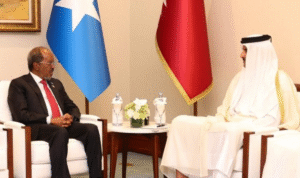Deep in the heart of the Gaza Strip lies the Netzarim Corridor, a geographical flashpoint that continues to be heavily scrutinized amid the ongoing Israel-Palestine conflict. This narrow strip of land, home to turbulent history and constant tension, serves as an axis of contention between the two sides, with both military operations and political resolutions hinging on its fate.
The corridor, named after the now-dismantled Israeli settlement of Netzarim, has often been a symbol of the broader conflict that extends across this troubled region. Once a settlement that was fiercely protected by Israeli forces, Netzarim became a focal point during the Second Intifada before Israel evacuated it in 2005 as part of the disengagement plan.
Today, the Netzarim Corridor remains significant for its strategic location. It acts as both a sustenance line and a barrier. For Palestinians, it’s a major passageway connecting northern and southern Gaza, vital for transporting goods and people within the beleaguered enclave. For Israel, the corridor represents a buffer zone, intensifying the already tight security measures aimed at preventing attacks from militant groups operating within Gaza.
This contentious strip of land has seen more than its fair share of violence, with several military incursions marking its ground. These confrontations have frequently escalated into larger conflicts, drawing international attention. Hence, political leaders on both sides recognize its strategic value while grappling with the complex realities it embodies.
To complicate matters further, civilians trapped in this geopolitical tug-of-war bear the brunt of the unrest. Palestinian families struggle with restricted movement, as closed borders often mean limited access to essential supplies. Meanwhile, Israeli communities neighboring Gaza live under the constant threat of rocket attacks, prompting a relentless cycle of retaliation and defense.
Amid the animosity, efforts by international organizations continue to focus on improving humanitarian conditions. Yet, the tangled web of political impasse and sporadic violence makes sustainable peace an elusive goal.
The future of the Netzarim Corridor remains entwined with the broader quest for a lasting resolution to the Israel-Palestine conflict. While peace talks have stalled and violence periodically resurfaces, the global community watches closely, yearning for a breakthrough that might finally bring stability to this perennially volatile axis.
As the situation unfolds, the Netzarim Corridor stands as a microcosm of the larger struggle, a symbol of hope and despair woven into the very fabric of this enduring conflict.







Comment